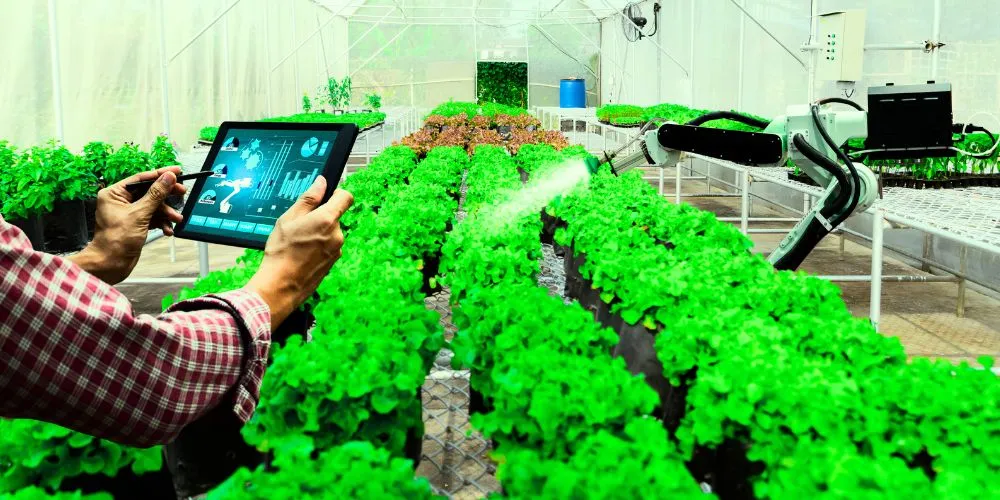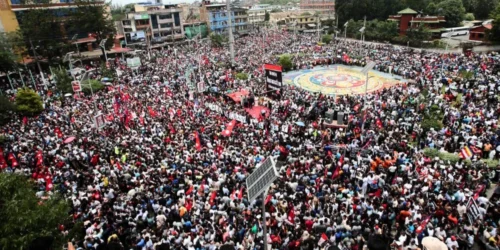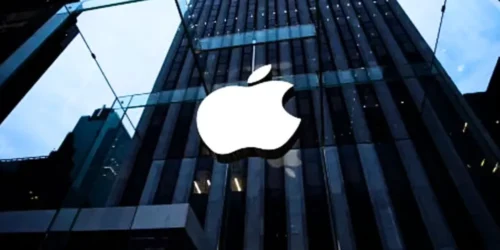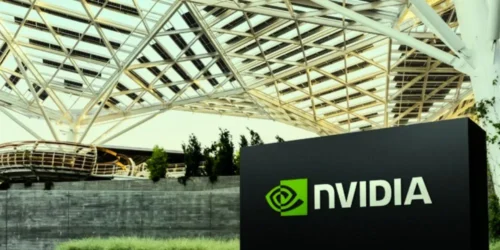For most of us, the image that springs to mind is a pastoral scene, a timeless landscape painted by our collective nostalgia. We see a red barn, a sturdy farmer in overalls, rolling fields of corn waving in the breeze, and the lowing of cattle at dusk. It is a picture of tradition, of hard-won simplicity, of a life dictated by the ancient rhythms of the sun and the seasons.
The modern farm is not a pastoral poem. It is a high-tech, data-drenched, capital-intensive, and brutally competitive industrial enterprise. The farmer of the 21st century is not just a steward of the land; they are a CEO, a data scientist, a chemist, a geneticist, and a logistics manager. The most important tool on many modern farms is not the plow; it is the iPad.
This is a case study of a quiet revolution, one that has been unfolding in the fields and furrows of our planet, largely unseen by the urban populations it feeds. This is the story of agricultural technology, or “AgTech.” It is the story of how humanity has harnessed the powers of satellites, sensors, software, and genetic code to tackle its oldest and most fundamental challenge: how to feed a growing population on a finite planet.
We will trace this revolution from its roots in the mechanical age to its current, dizzying frontier of autonomous tractors and gene-edited crops. We will use the specific, on-the-ground challenges of a modern American corn farmer as our lens, seeing how these abstract technologies are applied in the real world to make life-and-death decisions. We will also confront the profound and often uncomfortable questions this revolution raises—about the consolidation of power, the future of the family farm, and the very nature of the food we eat.
This is not a story about a distant, futuristic world. This is the story of the field down the road. It is a story of how the most ancient of human endeavors has become one of the most technologically advanced, a relentless, high-stakes battle to push the limits of what the earth can provide.
The Ghost in the Machine – From Green Revolution to Precision Agriculture
The current AgTech revolution did not spring from a vacuum. It is the third great wave in a long tide of agricultural innovation that began a century ago. To understand the “why” of today’s technology, we must first understand the triumphs and the unintended consequences of the revolutions that came before.
The Mechanical Revolution (Early 20th Century)
For millennia, farming was a battle of muscle against dirt. A farmer’s productivity was limited by the power of his own body and that of his animals. The invention of the internal combustion engine changed everything. The tractor replaced the horse and the mule, allowing a single farmer to cultivate vastly more land than ever before. The mechanical combine harvester replaced legions of farmhands, turning the labor-intensive process of harvesting grain into a one-person operation.
This revolution was about brute force multiplication. It was about scale. It allowed for the consolidation of small plots into massive farms and triggered a mass exodus of labor from the countryside to the cities. It was incredibly successful, but it treated the land as a uniform factory floor.
The Green Revolution (Mid-20th Century)
After World War II, a new revolution began, this time at the chemical and genetic level. Scientists like Norman Borlaug developed new, high-yield varieties of wheat, rice, and corn. These “miracle” crops, when combined with massive inputs of synthetic nitrogen fertilizers (a technology developed from the same process used to make explosives during the war) and chemical pesticides, produced staggering increases in yield.
The Green Revolution is credited with saving over a billion people from starvation. It was a monumental achievement of human ingenuity. But it, too, had a dark side. It continued the “factory floor” approach to farming, but now it drenched that factory in chemicals. This led to widespread environmental problems, from nitrogen runoff polluting rivers and creating “dead zones” in the oceans, to the evolution of pesticide-resistant “superweeds.” It also made farmers incredibly dependent on a handful of large chemical and seed companies.
By the end of the 20th century, this model was hitting a wall. Yield growth was plateauing. The environmental costs were becoming undeniable. Farmers were trapped in a high-input, high-cost system with thinning margins. The world needed a new revolution, one that was not about treating the farm as a uniform factory, but about understanding and managing it as a complex, variable, living system.
The Precision Revolution – The Farm as a Data Set
The third, and current, revolution was born from two technologies that seemingly had nothing to do with farming: the Global Positioning System (GPS) and the personal computer.
In the 1990s, the U.S. military’s GPS satellite network became available for civilian use. For the first time, a farmer could know their precise location in a field, down to the centimeter. At the same time, affordable, powerful computers and software began to appear. The combination of these two tools unlocked a radical new way of thinking about farming. This was the birth of precision agriculture.
The core idea of precision agriculture is simple but profound: Stop treating a field as a uniform entity, and start managing it based on its infinite variability.
A farmer has always known, intuitively, that a 100-acre field is not a monolith. The soil on the hilltop is different from the soil in the low-lying hollow. The part of the field near the woods gets less sun. One section might be sandy and drain quickly, while another might be heavy clay that holds water.
For generations, the farmer had to manage this field with a blunt instrument. They applied the same amount of fertilizer, the same amount of seed, and the same amount of water across the entire 100 acres. This meant they were inevitably over-applying in some areas (wasting money and polluting the environment) and under-applying in others (sacrificing yield).
Precision agriculture gave the farmer a set of digital eyes and a surgical scalpel.
- Yield Mapping: A GPS unit on a combine harvester could now create a detailed map of the field, showing exactly which parts produced high yields and which produced low yields. This was the first step: turning intuition into hard data.
- Grid Sampling: Farmers could take soil samples from specific, geo-referenced points across the field, creating a detailed map of nutrient levels, pH, and soil type.
- Variable Rate Technology (VRT): This was the scalpel. The data from the yield maps and soil samples could be fed into a computer, which would then create a “prescription map.” This digital prescription would be loaded onto a smart tractor. As the tractor moved across the field, its GPS would tell it exactly where it was, and the computer would tell the connected seeder or sprayer to apply a precise, variable rate of seed, fertilizer, or pesticide based on the needs of that specific spot.
This was a paradigm shift. The farmer was no longer just a driver; they were a programmer, managing their field zone by zone, meter by meter. They were moving from brute force to intelligent application. This precision revolution laid the foundation for everything that was to come. It turned the farm into a vast data set, waiting to be analyzed, optimized, and ultimately, automated.
A Day in the Life of a Digital Farmer – The AgTech Stack in Action
To see how this revolution plays out in the real world, let’s step into the muddy boots of a fictional, but representative, modern American farmer. Let’s call her Sarah.
Sarah manages a 2,000-acre family farm in Iowa, growing primarily corn and soybeans. Her grandfather farmed this same land with a team of horses. Her father adopted the tractors and synthetic fertilizers of the Green Revolution. Sarah’s farm is a showcase of the precision and digital revolutions. Her “stack” of agricultural technology is a complex, interconnected ecosystem of hardware and software that governs every decision she makes, from planting to harvest.
The Pre-Season: The Digital Twin
Long before the first seed goes into the ground, Sarah is in her office, which looks more like a NASA mission control center than a traditional farmhouse. On a large monitor, she is looking at a “digital twin” of her farm. This is a multi-layered, data-rich model created by her farm management software platform, a service she subscribes to from a company like John Deere or a startup like Farmers Business Network.
This digital twin integrates dozens of data streams:
- Historical Yield Data: Years of color-coded yield maps from her combine show the long-term productivity patterns of every square meter of her land.
- Soil and Topography Maps: Detailed maps, created from both on-the-ground samples and LIDAR scans, show her the soil composition, organic matter, and elevation changes across her fields.
- Satellite and Drone Imagery: She can pull up years of satellite imagery (using a service like Planet Labs) showing the Normalized Difference Vegetation Index (NDVI), a measure of plant health. A dark green spot indicates healthy, thriving crops, while a yellow or red spot indicates stress. This helps her identify problem areas that need attention.
Using this platform, Sarah runs simulations. She can test different seed hybrids against different soil types. She can model the financial impact of varying fertilizer prices. She is making multi-million-dollar decisions not based on gut feeling or tradition, but on a powerful predictive model built on years of accumulated data. She creates a detailed, variable-rate prescription plan for each field, dictating exactly what seed variety will be planted, at what population density, and with what starter fertilizer, for hundreds of different micro-zones across her farm.
Planting Season: The Symphony of a Smart Fleet
When it’s time to plant, Sarah’s machinery comes to life. Her massive John Deere planter is not just a machine for dropping seeds. It is a rolling, intelligent robot.
- Guidance and Autosteer: Guided by high-precision GPS (RTK, or Real-Time Kinematic, which provides sub-inch accuracy), the tractor drives itself in perfectly straight lines, eliminating wasteful overlaps and operator fatigue. Sarah is not steering; she is monitoring the systems.
- Variable Rate Seeding: As the planter moves across the field, it executes the prescription map Sarah created. In the highly productive, rich soil zones, it might plant 36,000 seeds per acre. As it crosses into a patch of sandy, less productive soil, it automatically throttles back to 28,000 seeds per acre, saving on expensive seed costs and optimizing the plant population for the available resources.
- Downforce Control: Each row unit on the planter has a sensor and a hydraulic actuator that constantly adjusts the downforce, ensuring every single seed is planted at the perfect depth, no matter the soil condition.
All of this is happening at once, a symphony of coordinated action. And all the data—every seed planted, its exact location, the soil moisture at that spot—is being streamed back in real-time to Sarah’s farm management platform, updating the digital twin.
The Growing Season: The Watchful Eyes in the Sky
Once the crop is in the ground, Sarah’s role shifts to that of a vigilant crop doctor. The challenge is to identify and address problems—pests, disease, nutrient deficiencies—before they can significantly impact her yield. Here again, technology gives her superhuman senses.
- Drone Scouting: Instead of walking thousands of acres, Sarah can launch a drone equipped with a multispectral camera. In a matter of hours, the drone can survey her entire farm, capturing high-resolution imagery that can detect subtle changes in plant health invisible to the human eye. The software can stitch these images together, creating a “stand count” to check for germination issues or flagging a potential fungal outbreak in a specific corner of a field.
- In-Field Sensors: She has a network of sensors scattered throughout her fields, monitoring soil moisture, temperature, and nutrient levels. This allows her to make precise irrigation decisions, watering only when and where it’s needed, conserving a precious resource.
- AI-Powered Diagnostics: If the drone spots a problem area, Sarah can use an app on her phone. She can take a picture of a diseased leaf, and an AI-powered image recognition tool (like Plantix) can instantly diagnose the specific disease or pest and recommend a targeted treatment.
This allows her to move from broad, preventative spraying to a “see and spray” approach. Her smart sprayer, also equipped with GPS and VRT, will only turn on its nozzles when it passes over a part of the field that has been identified as having a weed or pest problem, dramatically reducing her chemical usage and costs.
Harvest: The Final Accounting
Harvest is the moment of truth. Sarah’s combine harvester is the ultimate data-gathering machine. As it moves through the field, its yield monitor, calibrated with a moisture sensor and a GPS unit, is doing a final accounting of the season’s performance. It creates the final, high-definition yield map, showing her, down to the square foot, the results of all the decisions she made throughout the year.
This map is not the end of the season; it is the beginning of the next one. This new data will be fed back into her farm management platform, refining the digital twin, informing next year’s seed selection, and starting the entire cycle of precision and optimization all over again.
Sarah’s story is not science fiction. It is the daily reality for a growing number of farmers across the developed world. They are leveraging a powerful stack of technology to make farming more efficient, more productive, and, hopefully, more sustainable. But this revolution is not without its own set of deep and troubling questions.
The Digital Divide and the New Feudalism – The Dark Side of AgTech
The glittering promise of the AgTech revolution—a world of higher yields, lower environmental impact, and greater efficiency—masks a series of profound and often painful disruptions. The same technologies that empower a farmer like Sarah can also create deep divides, concentrate power, and threaten the very existence of the traditional family farm.
The High Cost of Entry: A Revolution for the Rich?
Sarah’s high-tech operation is not cheap. A new, fully equipped smart combine harvester can cost over a million dollars. The subscription fees for her farm management software, satellite imagery, and data analytics services can run into the tens of thousands of dollars per year.
This creates a massive digital and economic divide. Large, well-capitalized farming operations can afford to invest in this technology stack. The benefits they reap—higher yields, lower input costs—allow them to become even more profitable and competitive. They can then use these profits to buy or rent more land from their smaller neighbors.
The small- to medium-sized family farmer, already operating on razor-thin margins, is often locked out. They cannot afford the new machinery or the data subscriptions. They are forced to compete against their high-tech neighbors with one hand tied behind their backs. This technological treadmill accelerates the long-term trend of farm consolidation. The rich get richer, the big get bigger, and the small family farm, the bedrock of the pastoral American ideal, is pushed closer to extinction.
The Data Choke Point: Who Owns the Farm’s Most Valuable Crop?
In the new world of AgTech, the most valuable crop Sarah produces might not be her corn. It is her data. The years of yield data, soil maps, and operational information she generates are an asset of immense value. And a fierce battle is being waged over who controls it.
The major agricultural technology providers—companies like John Deere, Bayer (which owns Monsanto and the Climate FieldView platform), and Corteva—are all building closed, proprietary ecosystems. They want Sarah to use their green tractor, their seed genetics, their chemical inputs, and their software platform. In exchange for the benefits of this integrated system, the farmer often has to agree to share her data with the company.
This raises a series of troubling questions:
- Ownership: Does Sarah own her data, or does John Deere? Can the company aggregate her data with that of thousands of other farmers and use it for its purposes, like developing new products or even trading on commodity markets? The legal framework is murky and lagging far behind the technology.
- Portability: If Sarah wants to switch from John Deere’s platform to a competitor’s, can she easily take her years of precious data with her? Or is she locked into a single “vendor ecosystem,” much like an Apple user finds it difficult to switch to Android?
- Power Imbalance: These large corporations now have an unprecedented, god-like view of the entire agricultural landscape. They know, in aggregate, what is being planted, where it is being planted, and how well it is growing, long before the government’s official crop reports are released. This information asymmetry gives them immense power in the marketplace.
The fear among many farmers is that they are moving towards a new kind of digital feudalism, where they are no longer independent operators, but are more like sharecroppers on their land, dependent on a handful of powerful tech lords who own the platforms, control the data, and dictate the terms of engagement.
The Autonomy Paradox: The Deskilling of the Farmer
The promise of automation and AI is a farm that largely runs itself. We are on the cusp of fully autonomous tractors that can plant, spray, and harvest 24/7 without a human operator. The AI in Sarah’s farm management platform can now make recommendations for seed selection and fertilizer application that are often more accurate than her intuition.
This leads to a profound paradox. As technology advances, does the farmer become less skilled? The deep, intimate, almost artistic knowledge of the land that was passed down through generations—the ability to read the soil, to smell the rain, to understand the subtle language of the crops—risks being replaced by a reliance on the algorithm.
If the farmer becomes merely a “human-in-the-loop,” a monitor of systems developed by a handful of corporations in Silicon Valley or St. Louis, what happens to the independence and the core identity of the farmer? And what happens if the algorithm is wrong, or if its recommendations are subtly biased to favor the products of the company that designed it? The push for autonomy, while promising immense efficiency gains, also threatens to deskill and disempower the very people it is supposed to help.
The Final Frontier – Gene Editing, Vertical Farms, and the Future of Food
The AgTech revolution is far from over. As we look to the horizon, a new set of even more powerful and potentially disruptive technologies is coming into focus. These technologies promise to solve some of the deep challenges of our current system, but they also raise a new set of profound ethical and social questions.
The Genetic Scalpel: CRISPR and the Future of Crops
For the past 25 years, the debate over agricultural genetics has been dominated by Genetically Modified Organisms (GMOs). This technology involves taking a gene from one species (like a bacterium) and inserting it into the DNA of another (like a corn plant) to confer a desired trait, like pest resistance. While scientifically sound, GMOs have faced fierce public opposition and regulatory hurdles.
A new technology called CRISPR changes the game completely. CRISPR is not about adding foreign genes; it is a highly precise “genetic scalpel” that allows scientists to make small, targeted edits to a plant’s existing DNA. It is like using the “find and replace” function in a word processor.
The potential is staggering. Scientists can use CRISPR to:
- Develop drought-resistant wheat, allowing it to be grown in more arid regions.
- Create disease-resistant tomatoes, reducing the need for fungicides.
- Make crops more nutritious, boosting their vitamin or protein content.
- Even create hypoallergenic peanuts.
Because it does not involve introducing foreign DNA, proponents argue that CRISPR-edited crops should be regulated differently from traditional GMOs. They see it as a way to accelerate natural breeding processes, creating better, more resilient crops faster and more precisely than ever before. Critics, however, remain wary, raising concerns about unforeseen ecological consequences and the further consolidation of power in the hands of the few biotech companies that control the patents.
The Indoor Revolution: Vertical Farming and Controlled Environment Agriculture
The ultimate expression of precision agriculture is to take the field out of the equation entirely. Vertical farming and Controlled Environment Agriculture (CEA) involve growing crops indoors, in vertically stacked layers, under precisely controlled artificial conditions.
- The Environment: LED lights provide the perfect spectrum and intensity of light. A hydroponic or aeroponic system delivers a precisely calibrated nutrient solution directly to the plant’s roots. The temperature, humidity, and CO2 levels are all optimized by a central computer.
- The Benefits: This approach has several dramatic advantages. It uses up to 95% less water than field agriculture. Because it is a closed system, it requires no pesticides or herbicides. It can be located in the heart of a city, dramatically reducing “food miles” and providing fresh produce year-round, regardless of the climate.
- The Challenges: The primary challenge is energy. Replicating the power of the sun with LED lights is incredibly energy-intensive. The high upfront capital costs and energy expenses mean that vertical farms are, for now, largely limited to growing high-value, fast-growing crops like leafy greens, herbs, and some fruits. Growing staple crops like wheat, corn, or rice in this way remains economically unfeasible.
Vertical farming is not a replacement for traditional agriculture. Still, it represents a powerful new tool, a way to build a more resilient and localized food system, especially for our rapidly growing urban centers.
Conclusion: The Farmer’s Dilemma
The story of agricultural technology is the story of a relentless and necessary quest. It is the story of humanity’s ongoing effort to bend nature to its will, to produce more food from less land with fewer resources. The digital harvest is real, and it has brought incredible gains in productivity and efficiency. A farmer like Sarah can now manage her land with a level of precision and insight that would have seemed like magic to her grandfather.
But this revolution is not a simple story of progress. It is a story of profound trade-offs. The same technologies that empower can also entrench new forms of dependency. The push for efficiency and scale threatens the existence of the small family farm, the very institution that defines our agricultural ideal. The data that promises to unlock new insights also creates new choke points of power. The automation that promises to reduce drudgery also threatens to devalue the unique human wisdom of the farmer.
We stand at a crossroads. The path forward is not to reject this technology. We cannot feed 10 billion people with the tools of the 19th century. The challenges of climate change, resource scarcity, and a growing population are too immense. The alternative to high-tech farming is not a return to a pastoral paradise; it is mass starvation and ecological collapse.
The true challenge is not about the technology itself, but about how we choose to govern it. The farmer’s dilemma is our dilemma. Can we build a system that embraces the power of data and AI without creating a new digital feudalism? Can we use the precision of gene editing to create a more resilient food supply, while ensuring it is deployed safely and equitably? Can we harness the efficiency of automation without losing the invaluable, place-based knowledge of the people who work the land?
The future of the farm is the future of humanity. It will require not just brilliant engineers and data scientists but wise policymakers, engaged citizens, and, above all, farmers who can successfully navigate the complex, high-stakes, and ever-shifting landscape of this new agricultural frontier. The harvest of tomorrow will depend on the seeds of wisdom we plant today.













